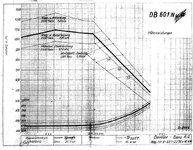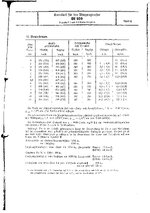I was reading about the more difficult and resource intensive processes needed to obtain C3 fuel, of which they never had enough except for a part of Jagdwaffe. I recall seeing somewhere that they could only make 70% C3 fuel for any B4 quantity given, not sure how accurate that is.
Now even before the war the germans recognized their severe lack of most resources, hence among others the metal substitution program that wrecked their engines by 1942. But let's say they extend this to fuel, what if they recognize they can't afford the C3 fuel (they already gave up on C2 before the war) and just focus on B4 production.
On one hand they have more fuel, maybe 1/3 more than whatever C3 quantity they produced during the war, so more fuel for operation and crucial things like training. It also eases the logistical burden, and iirc easier to store as well?
On the other hand some engines will be affected, such as the DB-601N and BMW-801D plus several late war DB and BMW models which will have to de tailored for B4 fuel, so less power. On the DB-601N though they might avoid the oil dilution problem perhaps, and also rubber fuel tank corrosion. Presumably they have to reduce the CR on the 601N but they can still have the higher rated supercharger(s) and increased rpm? And about the redesigned cylinder head, was that specifically to cope with C2/C3 fuel or was it adapted from the 601E? What kind of power can they get from a B4 powered 601N? Rough guess about 1100 PS at rated altitude (datasheet says iirc 1175 PS at 4900 metres with C3)?
As to the BMW-801D, could they get it to run eventually on B4 (at reduced power, probably not much more than the 801C at around 1600 PS)? The next step would be to try to adapt it for MW-50 boost for more power, which i understand posed serious issues with cylinder head cracking. They would have to get it to work somehow if they want more power though, they could probably get 1800-1900 PS out of a hypothetical DM, while from TS (TSM?) maybe not more than 2000 PS with MW-50, am i in the ballpark?
On the other hand, if they can't get the 801D and later models to give more power with barely acceptable reliability with B4 and MW-50, then perhaps they would relegate the BMW-801 as a bomber engine and put the DB-603 and Jumo-213 in the FW-190 a soon as the absolute bare minimum of reliability is reached, so FW-190C and FW-190D but earlier.
So more fuel for operations and training, but on the other hand the E/N and F1/2 models and the FW-190A models from A-3 onward have a bit less power and hence performance compared to OTL. Also late war DB-605AS/D engines would only run with B4 and MW-50, so probably can't get much past 1800 PS,
What gives then, better or worse for Luftwaffe to just run on B4 only?
Now even before the war the germans recognized their severe lack of most resources, hence among others the metal substitution program that wrecked their engines by 1942. But let's say they extend this to fuel, what if they recognize they can't afford the C3 fuel (they already gave up on C2 before the war) and just focus on B4 production.
On one hand they have more fuel, maybe 1/3 more than whatever C3 quantity they produced during the war, so more fuel for operation and crucial things like training. It also eases the logistical burden, and iirc easier to store as well?
On the other hand some engines will be affected, such as the DB-601N and BMW-801D plus several late war DB and BMW models which will have to de tailored for B4 fuel, so less power. On the DB-601N though they might avoid the oil dilution problem perhaps, and also rubber fuel tank corrosion. Presumably they have to reduce the CR on the 601N but they can still have the higher rated supercharger(s) and increased rpm? And about the redesigned cylinder head, was that specifically to cope with C2/C3 fuel or was it adapted from the 601E? What kind of power can they get from a B4 powered 601N? Rough guess about 1100 PS at rated altitude (datasheet says iirc 1175 PS at 4900 metres with C3)?
As to the BMW-801D, could they get it to run eventually on B4 (at reduced power, probably not much more than the 801C at around 1600 PS)? The next step would be to try to adapt it for MW-50 boost for more power, which i understand posed serious issues with cylinder head cracking. They would have to get it to work somehow if they want more power though, they could probably get 1800-1900 PS out of a hypothetical DM, while from TS (TSM?) maybe not more than 2000 PS with MW-50, am i in the ballpark?
On the other hand, if they can't get the 801D and later models to give more power with barely acceptable reliability with B4 and MW-50, then perhaps they would relegate the BMW-801 as a bomber engine and put the DB-603 and Jumo-213 in the FW-190 a soon as the absolute bare minimum of reliability is reached, so FW-190C and FW-190D but earlier.
So more fuel for operations and training, but on the other hand the E/N and F1/2 models and the FW-190A models from A-3 onward have a bit less power and hence performance compared to OTL. Also late war DB-605AS/D engines would only run with B4 and MW-50, so probably can't get much past 1800 PS,
What gives then, better or worse for Luftwaffe to just run on B4 only?


